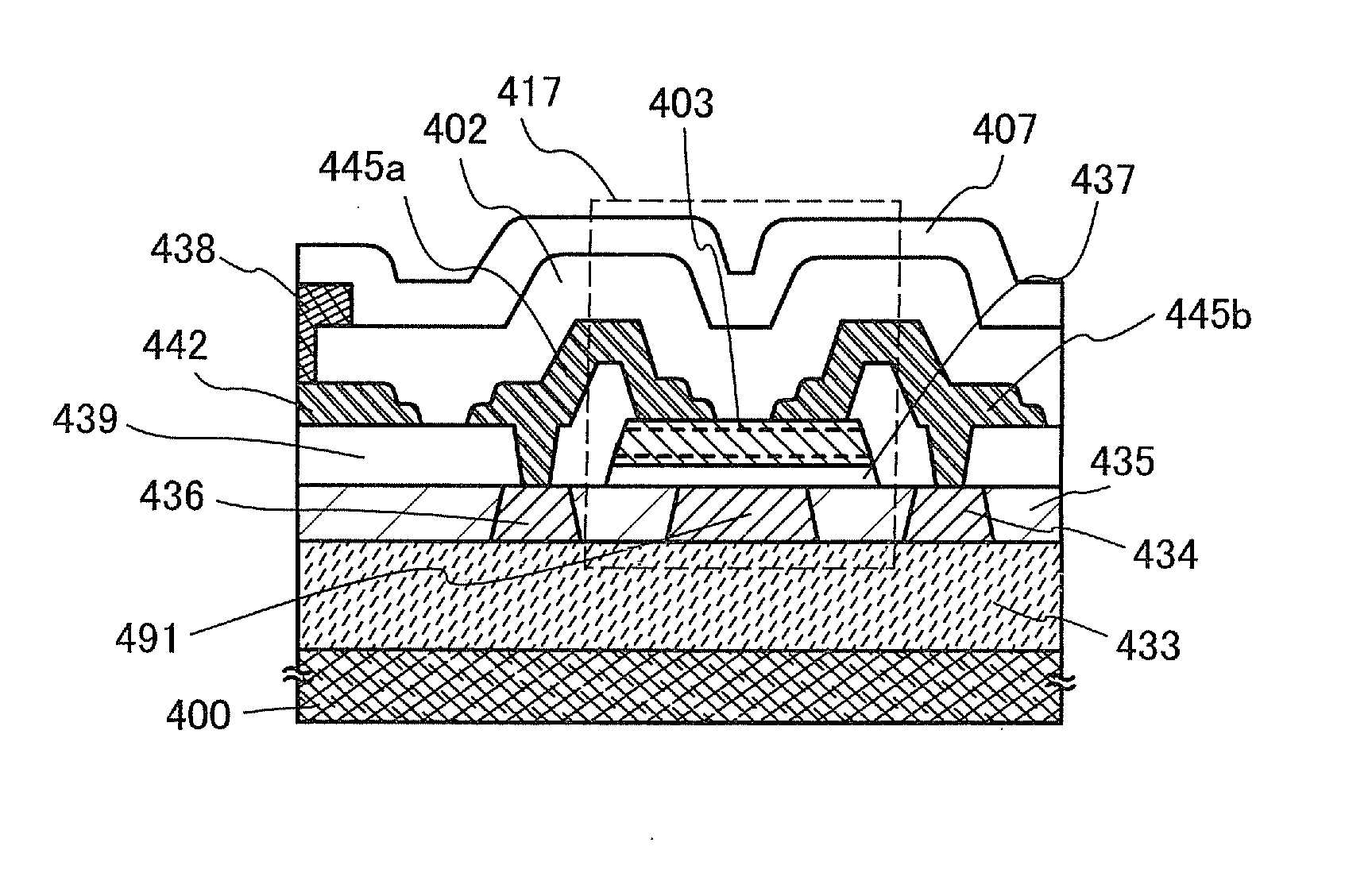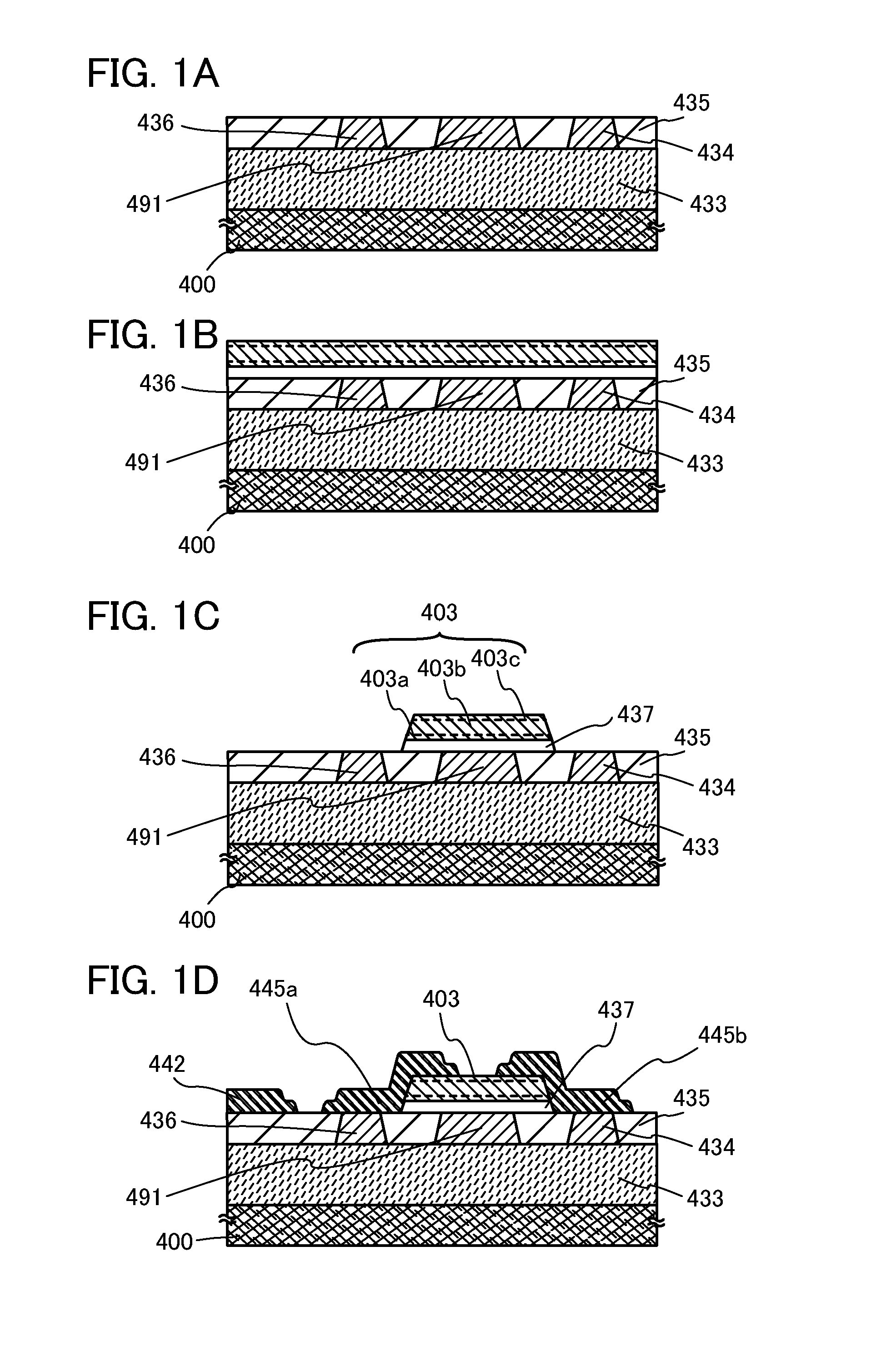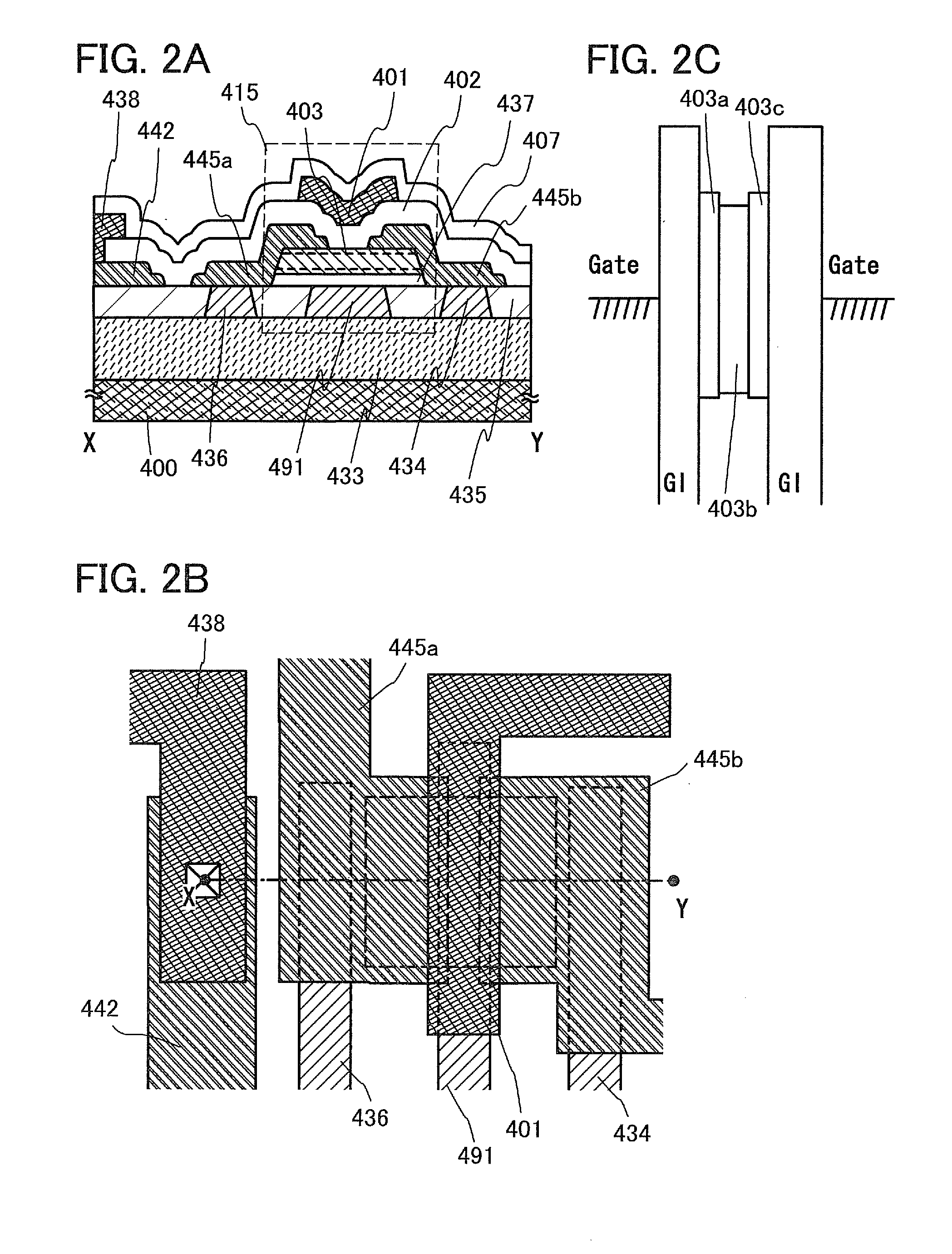Semiconductor device and method for manufacturing the same
a technology of semiconductors and semiconductors, applied in the direction of semiconductor devices, electrical devices, transistors, etc., can solve the problems of difficult to obtain transistor characteristics, and achieve the effect of high field-effect mobility
- Summary
- Abstract
- Description
- Claims
- Application Information
AI Technical Summary
Benefits of technology
Problems solved by technology
Method used
Image
Examples
embodiment 1
(Embodiment 1)
[0059]In this embodiment, one embodiment of a semiconductor device and a method for manufacturing the semiconductor device will be described with reference to FIGS. 1A to 1D. In this embodiment, an example of a method for manufacturing a transistor including an oxide semiconductor film is described.
[0060]First, an insulating film 433 is formed over a substrate 400 having an insulating surface. A conductive film is formed over the insulating film 433 by a sputtering method, an evaporation method, or the like, and the conductive film is etched, so that a conductive layer 491 and wiring layers 434 and 436 are formed.
[0061]There is no particular limitation on a substrate that can be used as the substrate 400 having an insulating surface as long as it has heat resistance high enough to withstand heat treatment performed later. For example, a glass substrate of barium borosilicate glass, aluminoborosilicate glass, or the like, a ceramic substrate, a quartz substrate, or a sa...
embodiment 2
(Embodiment 2)
[0095]In this embodiment, an example of a method for manufacturing a bottom-gate transistor will be described below. Part of steps in a manufacturing process is the same as that in Embodiment 1, and thus the detailed description of the part of the steps is omitted.
[0096]First, steps up to and including the step in FIG. 1C, which are described in Embodiment 1, are performed. Specifically, over the substrate 400, the conductive layer 491 and the wiring layers 434 and 436 are formed. Over the conductive layer 491 and the wiring layers 434 and 436, an oxide insulating film is formed. Then, polishing treatment (CMP) is performed, so that the planarized oxide insulating film 435 is formed and top surfaces of the wiring layers 434 and 436 and a top surface of the conductive layer 491 are exposed. After the CMP treatment, cleaning is performed, and then heat treatment for removing moisture attached on the substrate is performed. After the planarization, the insulating film 437...
embodiment 3
(Embodiment 3)
[0105]In this embodiment, an example of a semiconductor device including the transistor described in Embodiment 1 will be described with reference to FIGS. 4A and 4B.
[0106]The semiconductor device illustrated in FIGS. 4A and 4B includes transistors 740 and 750 including a first semiconductor material in a lower portion, and a transistor 610 including a second semiconductor material in an upper portion. The transistor 610 has the same structure as the transistor 415 described in Embodiment 1. The same reference numerals are used for the same parts as those in FIGS. 2A to 2C. FIG. 4B is a circuit diagram of the semiconductor device in FIG. 4A.
[0107]Here, the first semiconductor material and the second semiconductor material are preferably materials having different band gaps. For example, the first semiconductor material may be a semiconductor material other than an oxide semiconductor (e.g., silicon) and the second semiconductor material may be an oxide semiconductor. A...
PUM
 Login to View More
Login to View More Abstract
Description
Claims
Application Information
 Login to View More
Login to View More - R&D
- Intellectual Property
- Life Sciences
- Materials
- Tech Scout
- Unparalleled Data Quality
- Higher Quality Content
- 60% Fewer Hallucinations
Browse by: Latest US Patents, China's latest patents, Technical Efficacy Thesaurus, Application Domain, Technology Topic, Popular Technical Reports.
© 2025 PatSnap. All rights reserved.Legal|Privacy policy|Modern Slavery Act Transparency Statement|Sitemap|About US| Contact US: help@patsnap.com



